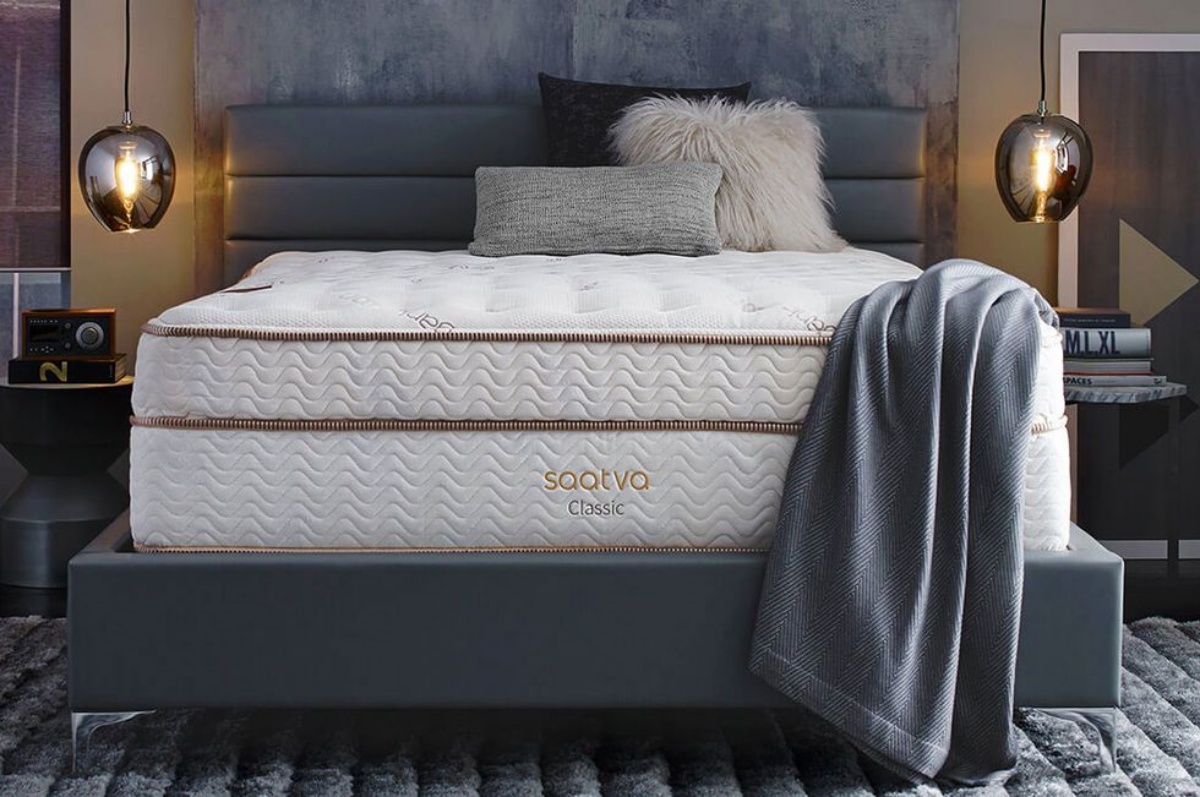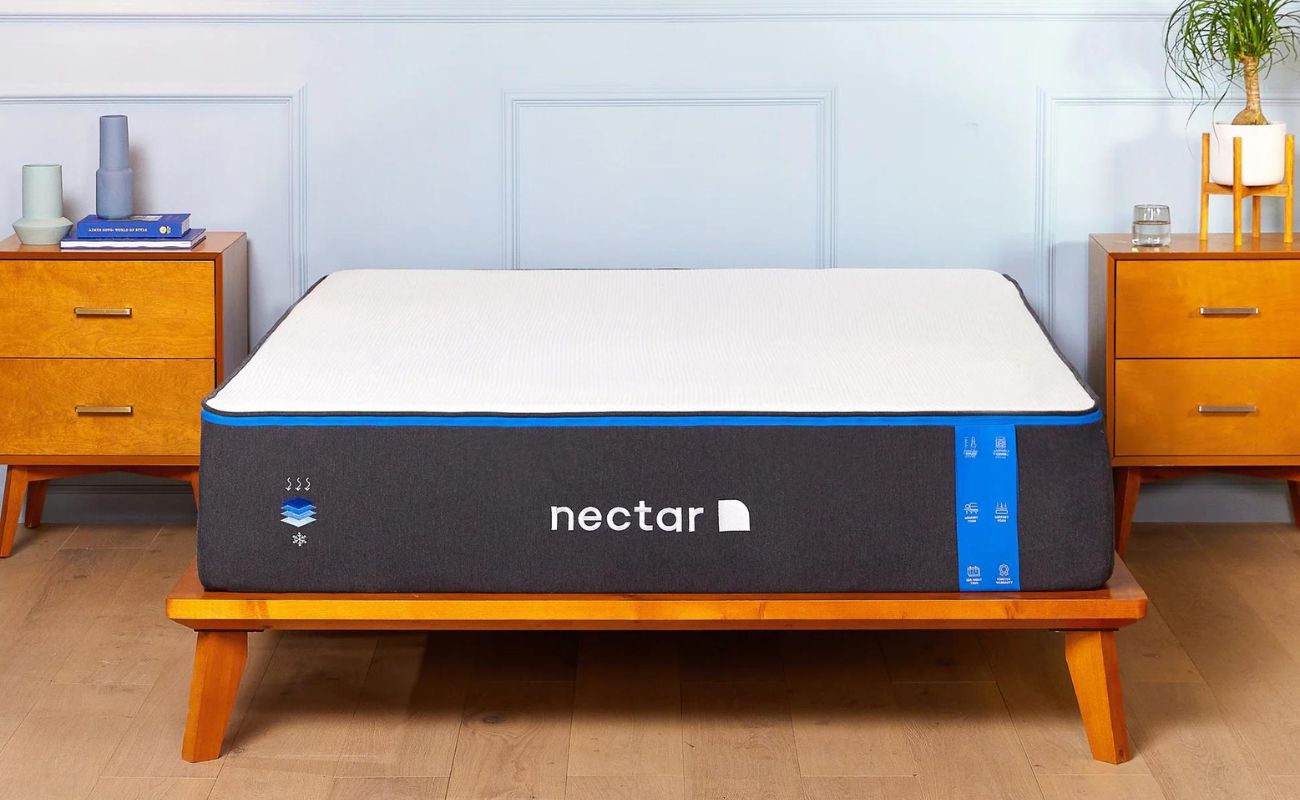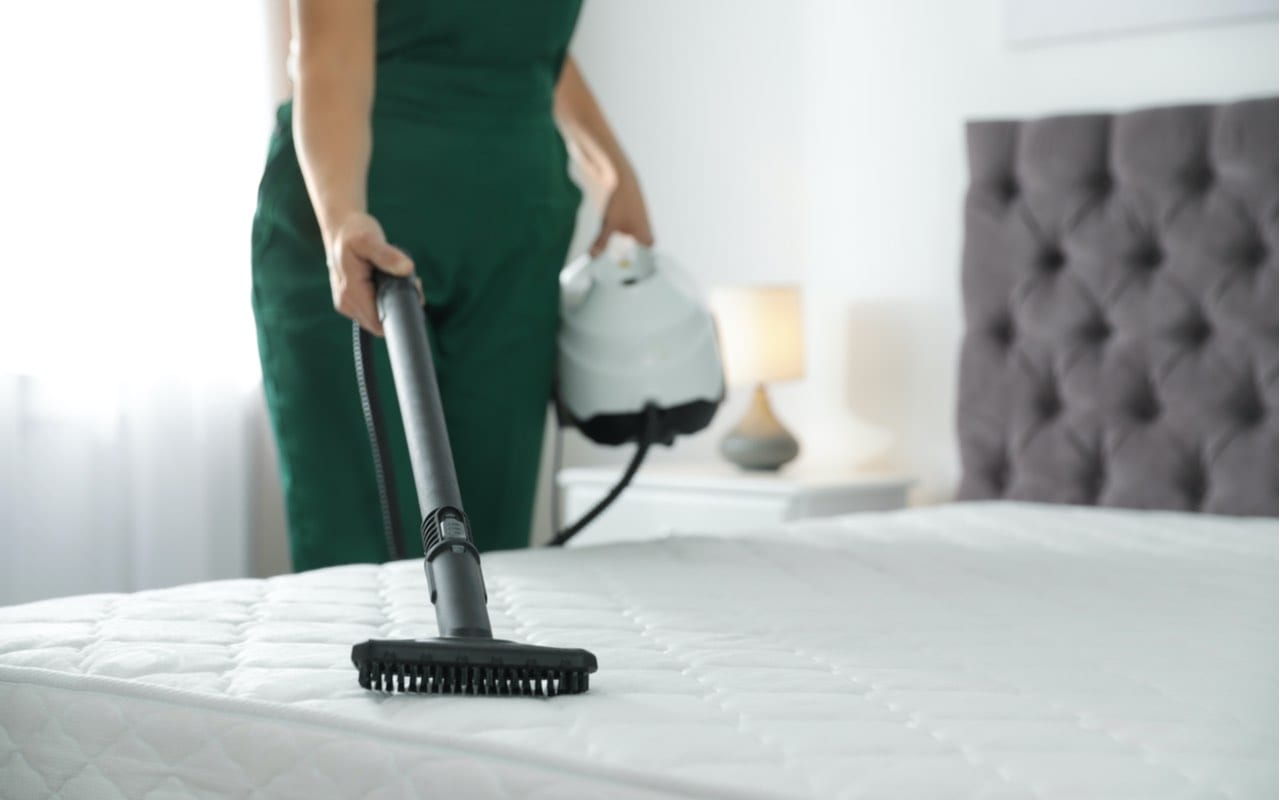Home>Interior Design>10 Things I Wish I Knew About Mattresses Before I Bought One


Interior Design
10 Things I Wish I Knew About Mattresses Before I Bought One
Modified: November 2, 2024
Discover 10 interior design insights about mattresses that I wish I had known before making a purchase. Enhance your sleeping experience with these valuable tips!
(Many of the links in this article redirect to a specific reviewed product. Your purchase of these products through affiliate links helps to generate commission for Storables.com, at no extra cost. Learn more)
Introduction
Choosing the right mattress is crucial for a good night’s sleep and overall well-being. However, with so many options available in the market, it can be overwhelming to find the perfect one that fits your needs and preferences. As an interior design expert with years of experience, I have come across various factors that are often overlooked when purchasing a mattress. In this article, I will share 10 things I wish I knew about mattresses before I bought one, to help you make a well-informed decision.
From considering the comfort level and support provided to understanding the different types of mattresses, size considerations, and the impact of budget, each aspect plays a key role in ensuring you choose the best mattress for yourself. Additionally, knowing about the mattress lifespan, maintenance and care requirements, trial periods and return policies, as well as warranty coverage, can help you avoid potential pitfalls and ensure a satisfactory purchase.
So, let’s dive in and discover the essential things you should know before investing in a new mattress.
Key Takeaways:
- Prioritize your comfort level and test out different mattresses to find the perfect fit. Consider the support level, mattress type, size, and budget to make an informed decision that aligns with your needs and preferences.
- Take advantage of trial periods, understand return policies, and consider warranty coverage to ensure a confident mattress purchase. Remember, a comfortable and supportive mattress is a worthwhile investment in your sleep quality and overall well-being.
Comfort Level
The comfort level of a mattress is subjective and varies from person to person. What might be comfortable for one individual could be uncomfortable for another. Therefore, it is essential to consider your personal preferences and needs when determining the comfort level that suits you.
Mattresses are typically classified into three comfort levels: firm, medium, and plush. A firm mattress offers a sturdy and supportive feel, ideal for those who prefer sleeping on their back or stomach. On the other hand, a plush mattress provides a softer, more cushioned surface, perfect for side sleepers who require pressure relief on their hips and shoulders. The medium comfort level is a balance between firmness and plushness, catering to a wide range of sleeping positions.
When selecting a mattress, it is crucial to test it out by lying down on it for a few minutes. This allows you to assess its comfort level and determine if it aligns with your personal comfort preferences. Keep in mind that comfort can also be influenced by factors such as body weight, body shape, and any specific sleep issues or conditions you may have.
Additionally, consider the materials used in the mattress construction and how they contribute to the overall comfort. Memory foam mattresses contour to your body, providing a more personalized and supportive feel. Latex mattresses offer a responsive and bouncy surface, while hybrid mattresses combine the benefits of different materials, offering a balance of comfort and support.
Remember, finding the right comfort level is crucial for a good night’s sleep and ensuring you wake up feeling refreshed and rejuvenated. Take the time to explore different comfort options and prioritize your personal comfort preferences when selecting a mattress.
Support Level
Alongside comfort, the support level of a mattress is equally important for a restful sleep experience. The support provided by a mattress plays a significant role in maintaining proper spinal alignment and preventing any discomfort or pain.
The support level of a mattress refers to its ability to keep your body well-supported while you sleep. It is crucial to choose a mattress that adequately supports your body weight and conforms to your body’s natural curves.
If you prefer a firm mattress, it will provide a more supportive surface that keeps your spine in alignment. This is especially important for individuals who experience back pain or have a history of spine-related issues. On the other hand, a softer mattress may offer more contouring and pressure relief, but it may lack the necessary support for some individuals.
When assessing the support level of a mattress, consider the materials used within its construction. Traditional innerspring mattresses provide a bouncy and supportive surface due to their coil system. Memory foam mattresses, on the other hand, mold to the shape of your body, offering targeted support to different pressure points. Latex mattresses also offer excellent support and responsiveness, promoting proper alignment during sleep.
A hybrid mattress combines different materials, such as memory foam and coils, to provide a balance between comfort and support.
It is essential to select a mattress that offers the appropriate level of support for your sleeping position and individual needs. Side sleepers may require more pressure relief around the hips and shoulders, while back sleepers may need additional support in the lumbar region. Consider your specific needs and ensure that the mattress you choose provides the necessary support for a comfortable and healthy sleep.
Remember, finding the right balance between comfort and support is crucial for a restful and rejuvenating sleep experience. Take the time to test out different mattresses and consult with the salesperson to find the perfect combination that fits your needs.
Different Mattress Types
When shopping for a mattress, understanding the different types available can help you choose the one that best suits your needs and preferences. Here are some common mattress types to consider:
- Innerspring Mattresses: Innerspring mattresses are one of the most popular types and feature a coil system that provides support and durability. These mattresses offer a range of firmness levels and are known for their bouncy feel.
- Memory Foam Mattresses: Memory foam mattresses are constructed from high-density polyurethane foam that contours to your body’s shape, providing excellent pressure relief. These mattresses are known for their ability to isolate motion, making them a great choice for couples.
- Latex Mattresses: Latex mattresses are made from natural or synthetic latex foam, offering both comfort and support. They are known for their responsiveness and ability to regulate temperature, providing a cool and comfortable sleep surface.
- Hybrid Mattresses: Hybrid mattresses combine the benefits of different materials, such as memory foam, latex, and innerspring coils. These mattresses offer a mix of comfort, support, and durability, making them a popular choice for many sleepers.
- Pillow-Top Mattresses: Pillow-top mattresses have an additional layer of cushioning on the top, providing extra comfort and softness. This layer can be made of foam, fiberfill, or a combination of materials.
- Adjustable Mattresses: Adjustable mattresses allow you to customize the angle and position of your mattress, providing excellent support and comfort for individuals with specific sleep needs, such as back pain or acid reflux.
Each mattress type offers unique features and benefits, so it’s important to consider your specific requirements when making a choice. Factors like sleep position, body weight, desired firmness, and any existing health conditions can influence your decision. Take the time to test out different types of mattresses to determine which one feels the most comfortable and supportive to you.
Additionally, keep in mind that mattress materials can impact factors such as durability, breathability, and eco-friendliness. Research the specific materials used in the mattress you are considering to ensure they align with your preferences and values.
Understanding the different mattress types available will help you make an informed decision and find the perfect mattress that suits your sleep needs and preferences.
Mattress Size
When purchasing a new mattress, it’s essential to consider the size that will best accommodate your needs and fit into your bedroom space. Mattresses come in a variety of sizes, and selecting the right size is crucial for a comfortable and functional sleeping setup.
Here are the standard mattress sizes available:
- Twin: Also known as a single mattress, the twin size is the smallest option available. It measures approximately 38 inches wide and 75 inches long. Twin mattresses are ideal for children’s bedrooms, guest rooms, or small spaces.
- Twin XL: The twin XL size is slightly longer than the standard twin, measuring 38 inches wide and 80 inches long. This size is often found in college dorms and is suitable for taller individuals who need extra legroom.
- Full: The full-size mattress, also known as a double mattress, measures approximately 54 inches wide and 75 inches long. A full-size mattress provides more width compared to a twin, making it suitable for teenagers or adults who prefer more sleeping space.
- Queen: Queen-sized mattresses are the most popular choice for couples and master bedrooms. They measure approximately 60 inches wide and 80 inches long, offering ample space for two people to sleep comfortably.
- King: King-sized mattresses provide the most space and are ideal for couples who prefer extra room to spread out. They measure approximately 76 inches wide and 80 inches long. King mattresses are also a great option for individuals who want to share their bed with pets or have a larger bedroom.
- California King: The California king mattress is slightly narrower but longer than a standard king. It measures approximately 72 inches wide and 84 inches long. This size is suitable for taller individuals who need the extra length.
When selecting a mattress size, consider your sleeping preferences, the number of people who will be using the bed, and the size of your bedroom. It’s important to ensure there is enough space to move around comfortably and accommodate any additional furniture in the room.
Keep in mind that mattress dimensions may vary slightly between different manufacturers, so it’s always a good idea to double-check the specific measurements provided by the brand you are considering.
Choosing the right mattress size will not only ensure a comfortable sleep but also contribute to the overall aesthetics and functionality of your bedroom.
Budget Considerations
When shopping for a new mattress, it’s important to set a budget and consider the cost implications. Mattresses come in a wide range of prices, and determining your budget will help you narrow down your options and find a mattress that fits within your financial means.
While it’s tempting to go for the cheapest option available, keep in mind that a good quality mattress is an investment in your comfort and well-being. A cheap mattress may not provide the necessary support, comfort, or durability, potentially leading to discomfort and the need for a replacement sooner than expected.
When setting your budget, consider the lifespan of the mattress. A higher-priced mattress often comes with better materials, advanced technology, and longer warranties, indicating a longer lifespan. Therefore, it’s important to think about the long-term benefits and costs associated with your mattress choice.
Additionally, take advantage of sales and discounts, which are often available at various times throughout the year. This can help you get a higher-quality mattress at a more affordable price.
It’s worth mentioning that some online mattress brands offer direct-to-consumer models, cutting out the middleman and reducing costs. These mattresses are often competitively priced, while still maintaining quality and providing a satisfactory sleep experience. However, be cautious and do your research to ensure you are purchasing from a reputable brand that offers reliable customer service and trustworthy warranties.
If your budget is limited, and you need a temporary solution, consider purchasing a mattress topper. Mattress toppers add a layer of comfort and can improve the overall feel of your mattress, without the expense of buying a new one.
Remember, while price is an important consideration, it should not be the sole factor in your decision-making process. Focus on finding a mattress that offers the right balance of comfort, support, and durability at a price point that fits your budget.
By carefully considering your budget and weighing it against the quality and features of various mattresses, you can make a smart and informed purchase decision.
When buying a mattress, consider your sleeping position, body weight, and any specific health concerns to ensure you choose the right level of firmness and support for a good night’s sleep.
Mattress Lifespan
Understanding the lifespan of a mattress is essential for making a wise purchasing decision. A mattress’s lifespan can vary depending on factors such as quality, materials, maintenance, and usage. While there is no exact expiration date for a mattress, knowing the average lifespan can help you gauge when it may be time to replace it.
On average, a good-quality mattress can last between 7-10 years. However, this can vary depending on the type of mattress and how well it’s taken care of. For example, an innerspring mattress may have a shorter lifespan compared to a memory foam or latex mattress.
The wear and tear on a mattress occur gradually over time. As the mattress ages, it may lose its support and cushioning, resulting in discomfort and disrupted sleep. This is why it’s important to consider the age of your mattress and assess its overall condition.
It’s beneficial to regularly check for signs that your mattress may need to be replaced. These signs include sagging or lumps, visible wear and tear on the surface or edges, and a noticeable decrease in comfort and support. If you’re consistently waking up with aches, pains, or poor sleep quality, it may be an indication that your mattress has reached the end of its lifespan.
However, it’s important to note that individual factors can also impact a mattress’s lifespan. Body weight, sleeping habits, and the presence of children or pets can all contribute to the wear and tear on a mattress. Heavier individuals, for example, may experience more compression and faster mattress deterioration. To extend the lifespan of your mattress, it’s important to follow proper maintenance and care guidelines.
To maximize your mattress’s lifespan, consider the following tips:
- Use a mattress protector to guard against spills, stains, and dust mites.
- Rotate your mattress every 3-6 months to distribute the wear evenly.
- Avoid jumping on your mattress, as it can lead to premature sagging.
- Follow the manufacturer’s cleaning guidelines to keep your mattress clean and fresh.
- Consider the weight limit recommendations, especially if you share the bed with a partner.
By properly caring for your mattress and being mindful of its age and condition, you can ensure it provides you with a comfortable sleep surface for its expected lifespan.
Maintenance and Care
Maintaining and caring for your mattress is crucial in ensuring its longevity and optimal performance. By following some simple maintenance tips, you can keep your mattress clean, fresh, and in good condition for years to come.
Here are some essential maintenance and care practices to keep in mind:
Use a Mattress Protector: Invest in a good-quality mattress protector to safeguard your mattress from spills, stains, dust mites, and bacteria. A waterproof mattress protector is especially important if you have young children or pets who may accidentally cause accidents on the bed.
Clean Regularly: Regular cleaning is essential to maintain a hygienic sleep environment. Vacuuming your mattress every few months helps eliminate dust, allergens, and debris. Be sure to pay attention to the seams and edges where dirt can accumulate. You can also spot clean stains using a mild detergent and warm water, but avoid saturating the mattress.
Avoid Excessive Moisture: Excessive moisture can lead to mold and mildew growth, which can damage your mattress and pose health risks. To prevent moisture buildup, make sure your mattress is adequately ventilated. Avoid placing it directly on the floor or against a damp wall. If you live in a humid climate, consider using a dehumidifier in your bedroom.
Rotate and Flip: Rotating and flipping your mattress can help distribute the wear and tear evenly. This is especially important for double-sided mattresses where both sides are designed for sleeping. Check the manufacturer’s guidelines to determine how often your mattress should be rotated and flipped.
Avoid Jumping on the Bed: Jumping or forcefully bouncing on the bed can damage the internal components of the mattress, leading to premature sagging or structural issues. Discourage any rough play or jumping to ensure the longevity of your mattress.
Don’t Bend or Fold: Avoid bending or folding your mattress, as it can damage the internal structure and affect its performance. When moving or transporting the mattress, use proper lifting techniques and consider using mattress protectors or covers for added protection.
Follow Manufacturer’s Instructions: Every mattress is unique, so it’s important to follow the specific care instructions provided by the manufacturer. This includes guidelines on cleaning methods, weight limits, and using the mattress with compatible bed frames or bases.
By incorporating these maintenance and care practices into your mattress routine, you can prolong its lifespan and enjoy a healthier and more comfortable sleep environment.
Trial Periods and Return Policies
When purchasing a new mattress, it’s essential to understand the trial period and return policy offered by the retailer or manufacturer. These policies can provide you with peace of mind and ensure that you are satisfied with your mattress purchase.
A trial period allows you to test out the mattress in the comfort of your own home for a specified period. This period can range from 30 to 365 days, depending on the brand or retailer. During this time, you can sleep on the mattress, assess its comfort level, and determine if it meets your expectations.
If, within the trial period, you find that the mattress is not suitable for your needs or preferences, you can typically return it for a refund or exchange. However, it’s important to understand the specific terms and conditions of the trial period and return policy.
Here are some key points to consider:
- Return Window: Ensure you are aware of the timeframe within which you can return the mattress. Some companies may require you to keep the mattress for a minimum number of nights before initiating a return, as it takes time for your body to adjust to a new sleep surface.
- Returns and Refunds: Familiarize yourself with the return process and whether you will receive a full refund or if there are any associated fees, such as restocking fees or return shipping costs. Some companies may offer free returns and full refunds, while others may have certain expenses or conditions that apply.
- Condition of the Mattress: Check if there are any specific requirements regarding the condition of the mattress for a return. Most companies will ask that the mattress be in good, clean condition without any excessive damage or stains.
- Warranty and Return Policies: Understand the relationship between the warranty and return policies. While a return policy allows you to return a mattress within a specific period, a warranty covers potential defects and issues that may arise over a longer period. Make sure you understand the details and coverage provided by both policies.
Before making a purchase, read reviews and research the reputation of the retailer or manufacturer regarding their trial period and return policy. Look for companies that have a transparent and customer-friendly approach, as it indicates their commitment to customer satisfaction.
Keep in mind that trial period and return policies may vary between different brands and retailers, so it’s crucial to carefully read and understand the specific terms and conditions before making a final decision.
By taking advantage of trial periods and understanding return policies, you can ensure that you make a confident mattress purchase and have the option to return or exchange it if it doesn’t meet your expectations.
Warranty Coverage
When purchasing a new mattress, it’s important to consider the warranty coverage provided by the manufacturer. A warranty protects you against potential defects in materials or workmanship that may arise during the specified warranty period.
Warranty coverage can vary between different mattress brands and models, so it’s essential to carefully read and understand the warranty terms and conditions. Here are some key points to consider:
- Warranty Length: Check the duration of the warranty offered. Most mattress warranties range from 5 to 20 years, with some high-end mattresses offering longer coverage. Keep in mind that the warranty period does not necessarily reflect the entire lifespan of the mattress.
- Prorated and Non-Prorated Coverage: Understand whether the warranty coverage is prorated or non-prorated. Non-prorated coverage means that the manufacturer will cover the full replacement cost during the specified period. Prorated coverage means that the cost of replacement or repair will be pro-rated based on the number of years you have owned the mattress.
- Defects Covered: Familiarize yourself with the defects or issues that are covered under the warranty. These may include sagging beyond a certain depth, broken or loose coils, faults in the stitching or zipper, or foam deterioration. It’s important to note that normal wear and tear or damage caused by improper use or neglect may not be covered.
- Warranty Claim Process: Understand the procedure for making a warranty claim. This may involve providing proof of purchase, photographs of the issue, or returning the mattress to the manufacturer or retailer.
- Exclusions and Limitations: Take note of any exclusions or limitations mentioned in the warranty. This may include specific guidelines for mattress care, weight limits, or the use of certain bed frames or foundations. Adhering to these guidelines is crucial, as failure to do so may void the warranty.
It’s important to register your mattress and keep a copy of the warranty documentation in a safe place. In case you need to make a warranty claim in the future, having this information readily available will streamline the process.
Keep in mind that warranty coverage is separate from a trial period or return policy. The trial period allows you to assess the comfort and suitability of the mattress, while the warranty provides protection against defects and manufacturing issues.
Before making a purchase, research the reputation of the manufacturer regarding their warranty service and customer support. Look for companies with a history of honoring their warranty commitments and providing excellent customer service.
Understanding and considering the warranty coverage of a mattress can provide you with added confidence and peace of mind when making your purchase.
Conclusion
Choosing the right mattress is essential for a restful sleep and overall well-being. By considering the various factors discussed in this article, you can make a well-informed decision that aligns with your comfort preferences, support needs, and budget.
Remember to prioritize your comfort level and test out different mattresses to find the one that suits you best. Consider the level of support provided by the mattress, as it plays a crucial role in maintaining proper spinal alignment and preventing discomfort.
Understanding the different mattress types available can help you select the one that suits your specific needs and preferences. Take into account the size of the mattress to ensure it fits your bedroom space and comfortably accommodates the number of sleepers.
While setting a budget is important, it’s essential to strike a balance between quality, comfort, and affordability. Consider the mattress’s lifespan and take good care of it to prolong its longevity.
Pay attention to the maintenance and care requirements of your mattress, as regular cleaning and proper usage can contribute to its overall performance and durability. Take advantage of trial periods and familiarize yourself with the return policies offered by the retailer or manufacturer.
Lastly, understand the warranty coverage provided by the manufacturer, ensuring you are protected against potential defects and issues.
By taking all these factors into account, you can make a confident decision when purchasing your next mattress. Remember, a comfortable and supportive mattress is a worthwhile investment in your sleep quality and overall well-being.
Frequently Asked Questions about 10 Things I Wish I Knew About Mattresses Before I Bought One
Was this page helpful?
At Storables.com, we guarantee accurate and reliable information. Our content, validated by Expert Board Contributors, is crafted following stringent Editorial Policies. We're committed to providing you with well-researched, expert-backed insights for all your informational needs.














0 thoughts on “10 Things I Wish I Knew About Mattresses Before I Bought One”